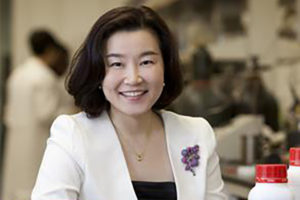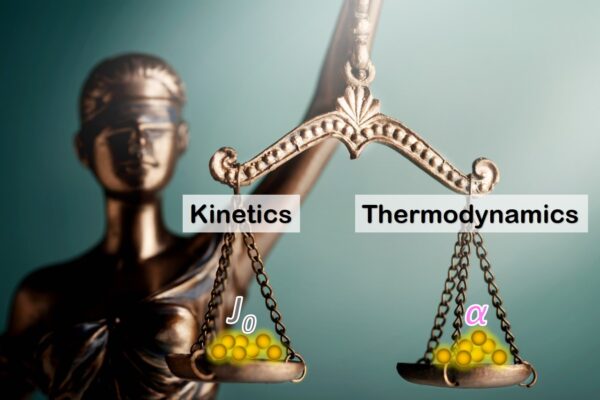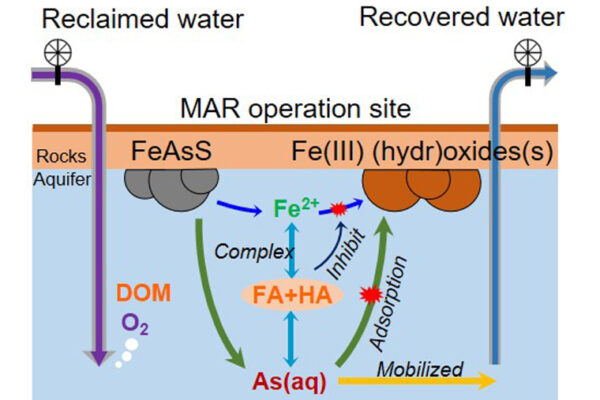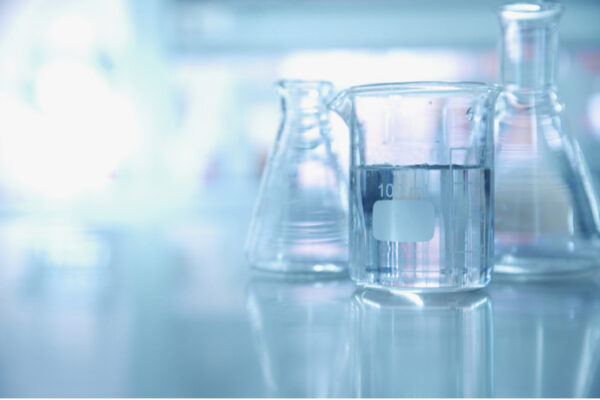From the splendorous red hues in the Grand Canyon to the mundane rust attacking a neglected bicycle, iron hydroxides are all around us. As a matter of fact, they are just as common as quartz, which is the most widely distributed mineral on the planet.
Scientists know that iron hydroxides can capture heavy metals and other toxic materials, and that iron oxides also can be natural semiconductors. While these properties suggest many applications, the full details of how iron hydroxides form on a quartz substrate have been hidden in a “black box” of sorts — until now.
Young-Shin Jun, a professor of energy, environmental and chemical engineering in the McKelvey School of Engineering at Washington University in St. Louis, has devised a way to open that box and observe the moment iron hydroxide forms on quartz.

Her research was published in Environmental Science & Technology.
“This is telling the story of the birth of iron hydroxide,” Jun said.
When people speak of “formation,” typically they are talking about a substance growing. Before growth, however, there needs to be something to grow. Where does that first bit of iron hydroxide come from?
First, sufficient precursor elements need to be in place. Then the components can come together to form a stable nucleus that will go on to become a tiny solid particle of iron hydroxide, called a nanoscale particulate. The process is called solid nucleation.
Science has a firm grip on the sum of these two processes — nucleation and growth, together known as “precipitation” — and their sum has been used to predict iron hydroxide’s formation behavior. But these predictions have largely omitted separate consideration of nucleation. The results “weren’t accurate enough,” Jun said. “Our work provides an empirical, quantitative description of nucleation, not a computation, so we can provide scientific evidence about this missing link.”
This contribution opens many important possibilities. We can better understand water quality at acid mine drainage sites, reduce membrane fouling and pipeline scale formation, and develop more environmentally friendly superconductor materials.
Jun was able to look inside of the black box of precipitation by using X-rays and a novel experimental cell she developed to study environmentally relevant complex systems with plenty of water, ions and substrate material, observing nucleation in real time.
Working at the Advanced Photon Source at Argonne National Laboratory in Lemont, Illinois, Jun employed an X-ray scattering technique called “grazing incidence small angle X-ray scattering.” By shining X-rays onto a substrate with a very shallow angle, close to the critical angle that allows total reflection of light, this technique can detect the first appearance of nanometer size particles on a surface.
The approach is so novel, Jun said, that when she discusses her lab’s work on nucleation, “People think we are doing computer modeling. But no, we are experimentally examining it at the moment it happens,” she said. “We are experimental observers. I can measure the initial point of nucleation.”
Her empirical method revealed that the general estimates scientists have been using overstate the amount of energy needed for nucleation.
“Iron hydroxide forms much more easily on mineral surfaces than scientists thought, because less energy is needed for nucleation of highly hydrated solids on surfaces,” Jun said.
Furthermore, having a precise value will also help improve reactive transport models — the study of the movement of materials through an environment. For instance, certain materials can sequester toxic metals, keeping them from entering waterways. An updated reactive transport model with more accurate nucleation information will have significant implications for water quality researchers working to better predict and control sources of pollution. “Iron hydroxide is the main sequestration repository for these contaminants,” Jun said, “and knowing their origin is critical to predicting their fate.”
For high-tech manufacturing facilities, having a more precise understanding of how iron oxides or hydroxides form will allow for the more efficient — less wasteful — production of iron-based superconductors.



Comments and respectful dialogue are encouraged, but content will be moderated. Please, no personal attacks, obscenity or profanity, selling of commercial products, or endorsements of political candidates or positions. We reserve the right to remove any inappropriate comments. We also cannot address individual medical concerns or provide medical advice in this forum.